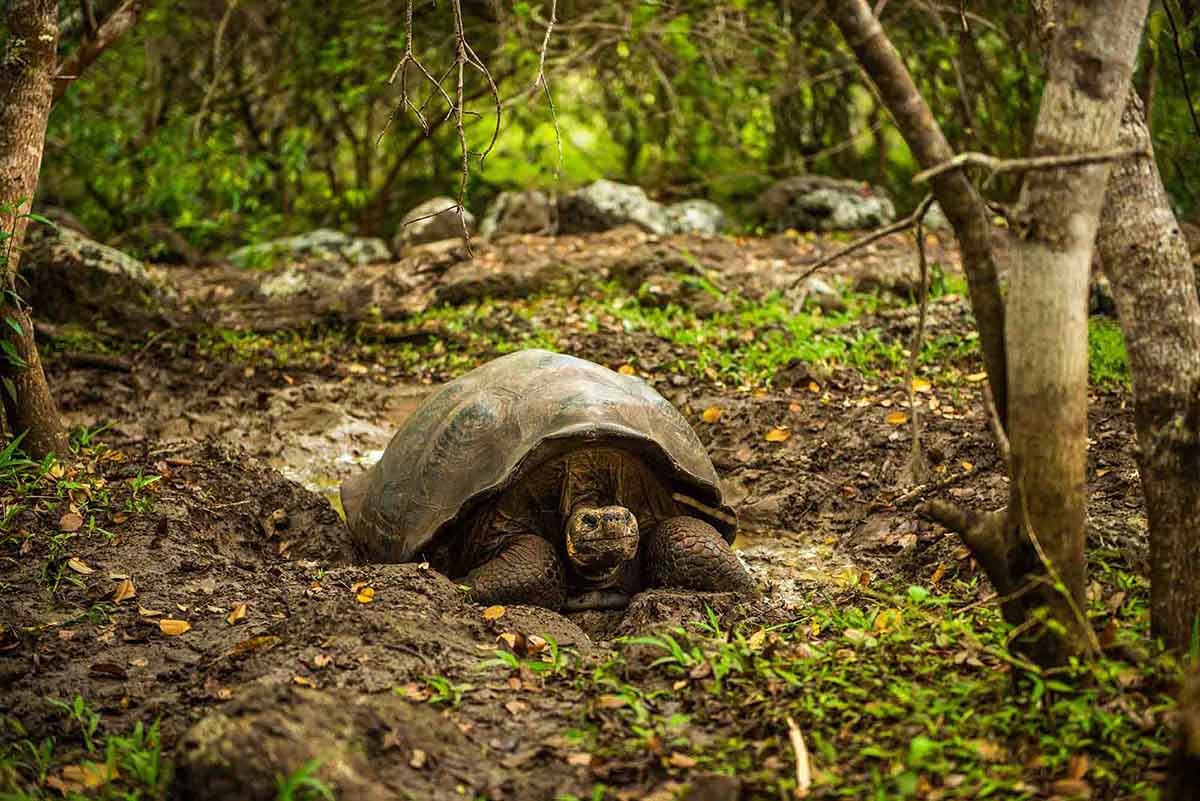Santa Cruz Island
The most visited Island of the archipelago
Located roughly in the center of the archipelago, the Island of Santa Cruz is the most populous of the Galapagos Islands and the second largest in the area, after Isabela. Dotted with a few small villages, the island is a large dormant volcano, which was once prone to volcanic eruptions. And now, the island is known for the queerest species that have evolved here, from giant tortoises to marine iguanas to blue-footed boobies to sea lions to the most evolving of all—the Darwin Finch. Santa Cruz is world renowned for the Charles Darwin Station, which is home to giant Galapagos tortoise.
Santa Cruz Island houses, the Darwin station, and the town of Puerto Ayora
The ideal and practical way to reach Santa Cruz is by air. Flights land on the Baltra airport situated on South Seymour or Baltra Island. You can take a bus route to Itabaca channel, which joins Baltra Island to Santa Cruz. The buses take passengers to Puerto Ayora, the largest town on the island. If you prefer the other way round, you can board a ship from Ecuador.
As far as climate is concerned, Santa Cruz is blessed with a favorable climate and hence pulls tourists all year round. Though there are regional climatic variations that occur because of altitude differences, overall the climate is inviting. While strolling down the island, after some time, you can find yourself driving past two or more distinct climate zones; you will never know when the dry, dusty landscapes diffuse into the foggy rainforest.
Getting to Santa Cruz is not that difficult, thanks to the ferry boats that offer a quick crossing between the Itabaca channel and Puerto Ayora. In addition to this, there are pick-up trucks that transfer passengers here and there on the island. The island is blessed with unique natural esthetics. Once you are at Puerto Ayora, you can take the help of a map and stroll on either side of the city to explore it further. The Charles Darwin Station lying about 1.5 km from Puerto Ayora is a turtle breeding center, where you can find the giant Galapagos tortoise. If you want to see the tortoise in the wild, El Chato Tortoise Reserve is a must-visit place. A 2.5 km-long road from Puerto Ayora will take you to Tortuga Bay, which is an exotic beach. You can catch a glimpse of sharks from across the bay.
If you are given to snorkeling, the Punta Estrada beach will indeed interest you. Snorkeling in the waters during high tide is fun. A water taxi from Puerto Ayora will land you there. For better access to the aquatic life within, trail further from the Punta Estrada beach and you will find yourself in Las Grietas, which is known for its exotic canyon brimming with water. Don’t miss out Lava Tunnels and Los Gemelos, which feature tragic remains of the past volcanic activity on the island.
Santa Cruz is also a great hub to enjoy visits to other Islands in the archipelago, the town of Puerto Ayora is the main departure point for day tours to the nearby North Seymour, Santa Fe, Plazas, Bartolome and Floreana Islands. At this famous port, you will also be able to find the speedboats that can take you to San Cristobal and Isabela. Being close to the most transited airport (Baltra) this is usually your first or last visit on a Galapagos cruise itinerary.
For accommodation, you will find a series of hotels lined in Puerto Ayora. There is a myriad of tourist hotels suiting every budget. Visit Santa Cruz Island in the Galapagos to see esthetics of nature that are hard to be found anywhere else.


